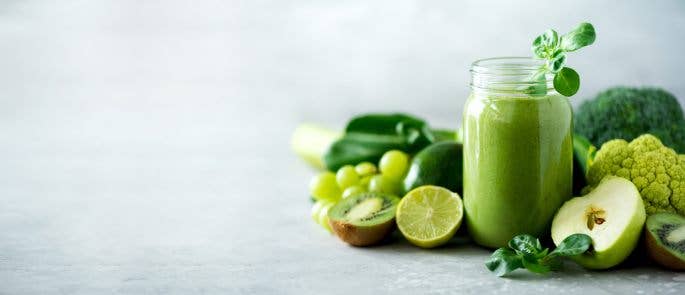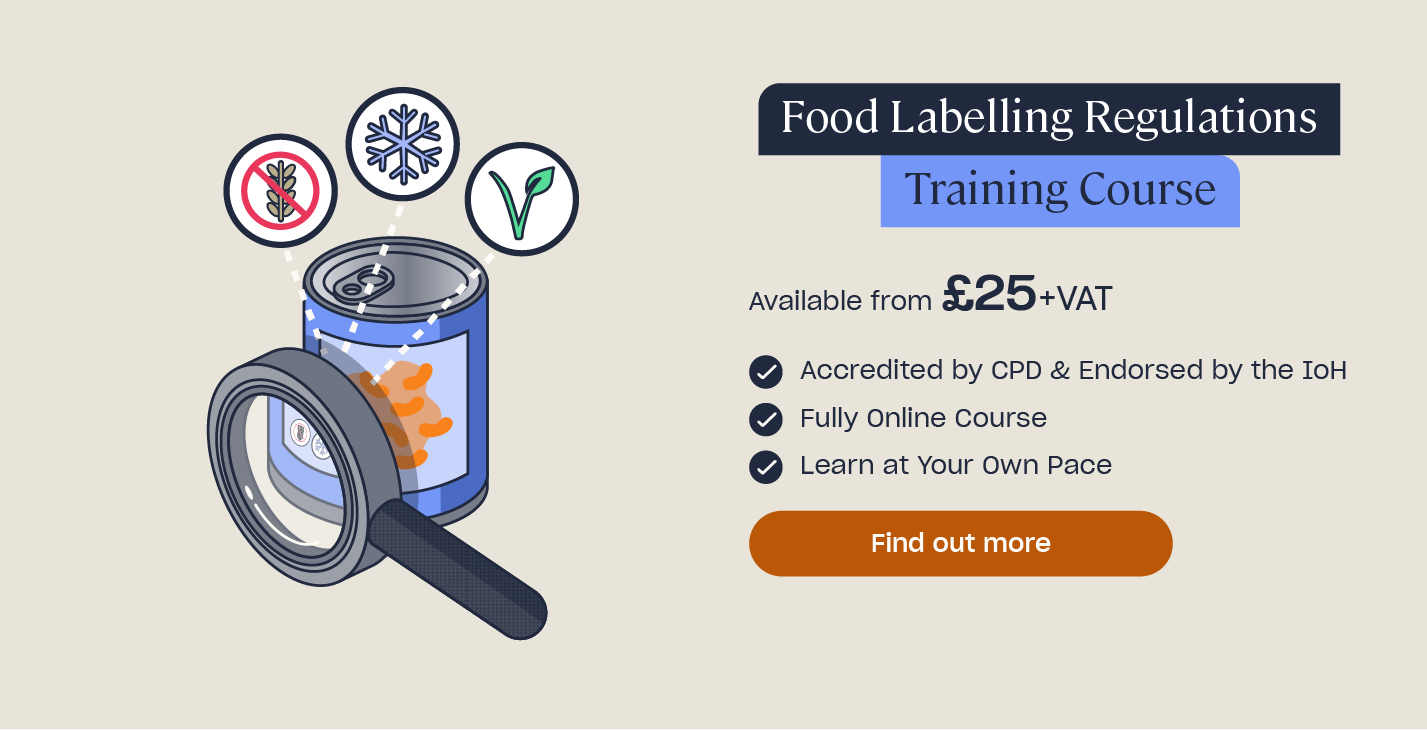Vegan Food Products: What are the Labelling Requirements?
Consumer demand for vegan alternatives continues to rise year on year as Brits embrace a more plant-based lifestyle; over 700,000 people signed up for Veganuary in 2023. An increase in demand has seen the manufacturing of ‘vegan’ and ‘plant-based’ food products grow. Individuals who practice a vegan diet do not consume animals, animal products, by-products or derivatives of animals, often for ethical and environmental reasons.
Those with allergies, such as milk and egg allergies, may consider vegan products to be free from allergens, but this is not always the case. This article will cover the labelling requirements for ‘vegan’ products, the difference between vegan and plant-based, and how vegan labelling requirements impact allergy sufferers.

What are the Vegan Labelling Requirements?
Transitioning to veganism can at first seem like an impossible task when it comes to navigating vegan food labels.
Voluntary claims on packaging such as ‘suitable for vegans’ and ‘vegetarian’ are covered by Food Information for Consumers (Regulation EU No 1169/2011 written into The Food Information Regulations 2014) and may be perceived by consumers in the same way that allergen food safety advice is. This perception could potentially be fatal to someone with a severe allergy.
Vegan foods do not have a legal UK or EU definition regarding what they can and cannot contain.
UK law prevents a consumer from being misled in The Food Information Regulations 2014 and Consumer Protection from Unfair Trading Regulations 2008. As vegans do not typically consume foods containing animal products, for example, meat, fish, seafood, eggs, milk and honey, it can be assumed that through these regulations, vegan products should also be free from animal products.
This lack of definition allows food producers to manufacture vegan products on the same line as a non-vegan product which could result in a cross-contact. For example, the phrase ‘may contain milk and eggs’ is permitted on vegan food labels to indicate to consumers there are potential cross-contacts from the production process.

Some supermarket retailers have stricter standards and do not permit vegan products to contain a cross-contact of non-vegan ingredients. To reduce confusion, and the expectation of vegan products to be free from animal product cross-contacts, some manufacturers have preferred to use the term ‘plant-based’. Plant-based, as it sounds, suggests to the consumer that the product mostly or entirely contains plant foods without compromising the term vegan or the expectations of those following a vegan diet.
Vegan Trademark Symbols
There are several vegan trademark symbols used in the UK, and each has different standards the food producer must meet. Food producers displaying these logos have to go through the certification process, and producers cannot use them on a self-certification basis.
Vegan Society

The Vegan Trademark symbol is an international vegan standard overseen by the Vegan Society. The Vegan Society also allows restaurants to register for their trademark for vegan-specific dishes. For a food producer to display the Vegan Society’s Trademark, the products:
Must
- Be stored and prepared separately from non-vegan dishes.
- Take all reasonable and practical steps to eliminate the risk of cross-contamination.
- Supply evidence that all food handlers and relevant employees have received training on the best practices of handling vegan products.
- Intend to uphold Vegan Trademark standards on an ongoing basis and demonstrate ongoing compliance.
Must not
- Contain any animal from the animal kingdom.
- Use animal products in the manufacture or development of the product.
- Contain animal by-products or derivatives.
- Involve or have involved testing on animals.
- Include genetically modified animal genes or animal-derived substances.
The Vegan Society Trademark regulations allow food producers to use the phrase ‘may contain’ on labels and packaging to indicate that cross-contacts of allergens or animal substances may occur in production. However, they do encourage manufacturers to minimise any cross-contacts as much as possible.
The Vegetarian Society’s Approved Vegan Trademark

The Vegetarian Society also accredit vegan food products through their Approved Vegan Trademark. The Vegetarian Society Approved Trademarks can also be found on restaurant menus. For a food producer to display the Vegetarian Society’s Approved Vegan Trademark, the products:
Must not
- Contain any animal-derived ingredients.
- Involve or have involved testing on animals.
- Include genetically modified animal genes or animal-derived substances.
- Contain any cross-contamination of animal products.
The biggest difference between the two sets of standards is that the Vegetarian Society’s Approved Vegan Trademark does not allow the phrase ‘may contain’ on labels and packaging to indicate cross-contact of allergens or animal substances.
Though some vegan symbols and logos are more widely recognisable than others, each country and region may have their own vegan logo with their own set of standards. Food producers looking to export vegan products may want to look into vegan logos of the region they want to export to.
Why Does Allergen Information on Vegan Food Cause Confusion?
Vegan and plant-based food products should not be assumed to be free from egg, milk, fish, mollusc and crustacean, or any other of the 14 named allergens, by consumers. If you are an allergy sufferer, you should always check the allergen information before buying and consuming the product.
Similarly, a vegetarian ‘dairy-free’, ‘lactose-free’ and ‘egg-free’ claim does not necessarily mean that a product is vegan. Again check the back of pack ingredients to ensure that there are no animal product derivatives, for example, beeswax.
It is important to remember that allergen-free and vegan are separate claims.
This is because vegan claims do not have the same health risk levels as an allergen ‘free-from’ claim. Vegan declarations are targeted at consumers who have made a lifestyle choice to avoid animal-derived foods, not because they need to avoid them for health reasons.

How Can Consumers Avoid the Pitfalls of Vegan Labels?
Consumers who follow a vegan diet for ethical reasons understandably may not be accepting of animal product cross-contacts. Those consumers should be vigilant in checking the back of pack labelling for ingredients and allergens displayed in bold font, to avoid consuming a potential cross-contact.
A vegan trademark is not applied to a food business as a whole. Rather, each product or menu item is accredited and reviewed individually. As a consumer, you should always check the packaging of a product you have not tried before, even if it is a brand you are familiar with.
If in doubt, consumers can contact manufacturers directly to find out if the product is free from animal products if it is a product that they wish to buy frequently.
Food Allergen Safety Advice
Bear in mind that vegan food products, whilst inherently free from many of the common food allergens like milk, eggs, fish and molluscs, are not necessarily completely allergen-free. For those with food allergies, it’s essential that you always read the ingredients label on all food you buy, vegan or not, to check for the allergens the food product contains.
This is especially important when it comes to vegan meat substitutes – like burgers and sausages – and other ready-made vegan products, as these often contain soy or nuts as a main ingredient as a substitute for the animal-derived equivalent. For people with food allergies, knowing the contents of their food is vital, and ingredient labels must always be checked carefully.
Further Resources:
- Food Labelling Regulations Course
- 8 Vegan Myths and Facts
- Allergen Regulations for Takeaways and Distance Sellers
- A Vegan Grocery List – 50 Ideas for a Healthy Vegan Kitchen
- Vegan Food Production: Guidance on Manufacturing Practices
- Food Allergy Chart Template for Hospitality
- Vegan Risk Assessment & Checklist for Food Manufacturers: Free Templates







